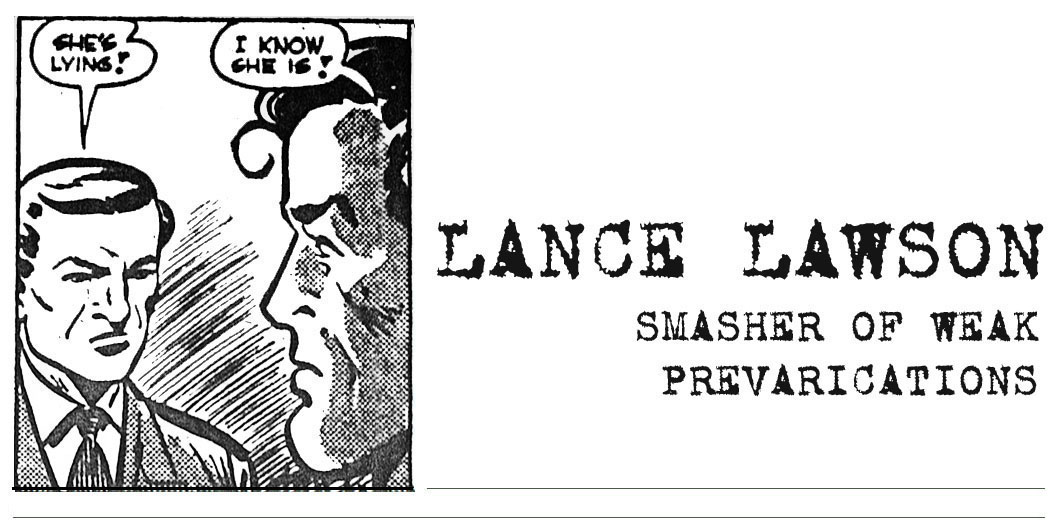|
When America thinks of Lance Lawson, they think of -
Well, they don’t really think of anything. That was the problem. In all the histories of comics I’ve consulted, I don’t find a word about Lance Lawson. Pity: Lance Lawson may have been the most economical crime fiction in human history. Four pictures, at least two characters, a mystery, a mystery resolved.
It’s a form of story-telling unique to comics. A prose version of a Lance Lawson strip would go as follows:
“Lance entered the room where the body had been found. He noticed that the window was open, and that there was no glass on the floor.
“‘What happened?’ he asked the blonde.
“‘I heard glass break - and when I came in the room, he was dead.’”
“‘That’s not what happened,’ Lance said.
The END!
In other words, there’s always a visual clue in the comics. It cannot be spelled out or described. Lance is quite adept at spotting these things, and you had to be a complete moron not to figure most of them out yourself. (It's a bit more difficult these days, since many mysteries hinge on a detail that was commonly known in the late 40s, but obscure today.) In this respect, Lance is part of a long and honorable tradition of comic strips that depend on your visual literacy to achieve their effects. They pack an astonishing amount of information into four panels; they are remarkably efficient pieces of storytelling. There’s a downside, of course - Lance’s unshakable accusations sound a little abrupt. It’s almost as if he just picks someone at random and barks YOU DID IT - and he’s correct 100% of the time.
Who was Lance? Who were his friends, what was his background? Was he a real police detective, or some sort of Sherlockian character who was called in on the tough cases? He had an astonishing clearance rate - 100% of 365 cases per year. He never lost, something not even Perry Mason could claim. Who was this strange and brilliant fellow?
The authors of the strip failed to flesh out their cardboard creation, so I’ve taken over. Crime fiction is, in a way, the easiest to write; the characters need only be hardbitten and harder boiled; the ending need only be sarcastic, or tragic, or a 50-50 combo of both. Complex human needs and reaction can be reduced down to the basics. When all else fails, have someone light a cigarette.
For a few weeks I used Lance Lawson strips as writing exercises - I’d look at the strip, set the timer and give myself 30 minutes, tops, to write a tale. No rewrites, no second drafts, no thinking about the story when I was taking a shower. I had a stack of cut-out cartoons, face down, and when I set the timer I’d turn one over, read, and write.
These are the results. If you're not interested in the fictonal extrapolations - and I can hardly blame you - just read the strips! They're lots of fun. Sixty episodes are posted for your enjoyment.
- JL
(site revised: 01/2018)
|
|

